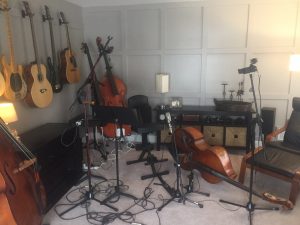Project Notes--Suspended Bridges
Suspended Bridges is a Chapin Jazz X-tet project where we performed and recorded an original tune that explores an idea about life during the pandemic, a time of Suspended Bridges. And without the opportunity to perform at our regular gigs, we were all eager to play. Listen Here>>
For my part (Bill Chapin), I used some of my extra time to learn video editing, recording, and mixing, along with continuing to play and compose.
Below are some details showing how each of us recorded ourselves as well as the workflow for the whole project.
Let this be a time of building and crossing bridges. Peace
About the Composition:
I don’t know if you can hear it in the music, but this piece is definitely inspired by life during the pandemic. Isolation, turning inwards, disruption of one’s normal routines, fear of illness–all these definitely played into the vibe of that time. It felt like the bridges that usually connect people and places had been, well, suspended.
To support that theme, all of the chords in this tune are sus chords, which, musically, don’t resolve. I felt that this harmonic structure would build on the idea of not experiencing a resolution to life. However, there may be some hope embedded in the melody, which uses patterns from the major scales to which each sus chord would resolve, if it could. The two Jims (Batons and Richardson), with their note and rhythmic choices, helped build that hope in the bridge, only to return with a sigh to status quo in the last 8 bars of the form.
Finally, I want to recognize that the idea of a tune based entirely on sus chords came to me when Joe Ott joined me to play a tune at my live events back in June of 2020. He suggested Jerry Bergonzi’s tune Repeato, and I loved the feel and harmonic restlessness this structure brings. You can hear our performance here. Thanks, Joe, (and Jerry) for the inspiration.
Personnel:
Jim Batson-Bass
Bill Chapin-Piano & Hammond Melodion
Jim Richardson-Drums
Jim Batson (bassist) recording notes:

AUDIO
Recorded in my music room at my home (see photo right). Tracks recorded on a Zoom H6 multi-track recorder. No outboard effects. Bridge mic is a Rode NT1 cardioid, condenser microphone. F-hole mic is an Audio Technica AT 3525 Cardioid, condenser microphone. Roll off and trim switches off.
Both microphones were phantom powered by the Zoom H6. Monitoring for the recording was through Audio Technica ATM M40x closed back headphones. Replay monitoring through AKG K271 MKII headphones. Line out from the H6 was used to feed a pre-mixed audio track to the two video cameras.
I include this information both in case anyone is curious what gear I used, and because I would highly recommend any of these items. The NT1 is my favorite all around microphone and the 3525 is a great, large diaphragm mic but comes in a small size compared to other large diaphragm microphones. The AKG headphones are fabulous but a bit bulky when I’m playing.
VIDEO
The video recording on this project came from two cameras. I highly recommend both, but depending on the application, one may suit the purpose more than the other.
The overhead shot was recorded on a Zoom Q2n-4K, This very small but powerful camera will set you back about $220. Records in modes up to 4K and audio up to xxx. Onboard mics are great but this recording was from a mixed version of the 5 tracks (sorry the bass is a bit heavy on the video mixes). The front shot was recorded on a Zoom Q8. This would set you back about $400. This camera maxes out at 1080P but has other features that are very helpful. Both of these cameras are designed for musicians and the audio capabilities are excellent. The Q8 has the added feature of XLR inputs, 4 separate audio channels and interchangeable on-board microphones (similar to the H6 recorder)
Bill Chapin (piano and melodion) recording notes:

AUDIO
I recorded the Yamaha C7 with a Zoom H4n, facing the XY variable stereo mics (set at 120 degrees) pointing towards the back of the instrument (about a foot in front of my head at eye height). I also pointed an AKG C1000S mic down towards the treble strings near me and another one toward the back of the piano; these mics used phantom power from the H4n. Unfortunately, one channel on my Zoom didn’t work. During mixing, I used mostly the tracks from the XY stereo mic on the H4n, but you are hearing some of the AKG C1000S mic that was positioned near me as well.
My Hammond Pro-44H Melodion boasts a quarter inch output, so I recorded it directly through my Focusrite Clarett 2Pre USB port into Logic. (Note: for the outdoor bridge segments, I recorded only the video and played the melody to a metronome click. The audio comes from the in-studio recording)
VIDEO
Piano side view, melodion-cam, and outdoor bridge segments on the melodion: GoPro 9
Melodion front view in studio: Logitech HD Pro Webcam C920
Overhead piano view: iPhone XR
Jim Richardson (drums) recording notes:
AUDIO
I didn’t pan any of the tracks and didn’t use any effects, although there may have been a tad of reverb on the snare mic. Also, I used 7 channels this time. The condenser on the hi-hat was redundant, as the other overheads picked it up fine. Also, the tom mics may only be needed to enhance, as the overhead picked them up quite well too.
DAW: Studio One on MacBook
Mics: Audix DP7 plus 1 series
Interface: Tascam us16x08
VIDEO
Front cam: GoPro 6
Top cam: iPhone 12 Velcroed to the ceiling
Recording and Mixing Notes:
GEAR
Computer: Apple iMac (Retina 5K, 27-inch, 2019), 3.7 Ghz 6-Core Intel Core i5
Computer Memory: 64 GB 2667 MHz DDR4
Current OS: Monterey, v 12.6
Interface: Clarett 2Pre USB
Studio Monitors: ADAM A5X, ADAM Sub10MK2 subwoofer
SOFTWARE
DAW: Apple Logic
Main plugins:
-
-
Sonarworks SoundID Reference
-
Fabfilter Pro-C, Pro-Q and Saturn
-
Valhalla VintageVerb
-
Video Editing: FinalCut Pro
Intro and ending video sequences: MotionProject
Project Work Flow:
Before inviting the two Jims to play on this tune, I created drum, bass, piano, and melodion tracks in Logic. After the guys heard this mock up, Jim Richardson recorded a rough draft track using his home recording setup. I replaced my Logic drums with Jim’s rough draft drums and sent the file (minus the bass line) to Jim Batson, who recorded his tracks. After replacing my Logic bass line (that I’d entered via a midi keyboard) with Jim’s bass recording, I used that file, minus the piano, and recorded the piano comping and solo. Somewhere in there, I did a fresh recording of the melodion, both melody and solo, in my studio and replaced the original version. All of this content went back (minus the drums) to Jim Richardson, who recorded the final version of the drumming and soloing.
Back in the studio, I recorded the shaker, using two AKG mics, that you hear during the piano solo. Jim Richardson sent me the shaker file, created digitally, that you hear on the outro.
Next, I enrolled in Bobby Owsinski’s Music Mixing Crash Course and worked on the recording as I went through each chapter. Here are the topics that his course takes you through: Prepping the Mix, Set Proper Levels,Set the Bass and Drum Levels, Set the Vocal/Lead to Track Balance, The Trick to Panning–Give each instrument its own place in the panning array, General Principals: Compressors, Steps in Setting up a Compressor, Compression Ratios, Mix Bus Compression, Hi-Pass (low cut) and Low-Pass (hi cut) Filters, EQ Bass & Drums, EQ the Vocal Early in the mix, Frequency Juggling, General Effects Tips, Fitting Effects to the Mix,
Effects Setups That Always Work
At this point, I pulled the audio file and all the video into FinalCut Pro and edited the video, including aligning the audio to the video. I also created the intro and outro clips in Motion.
By this time, the tune was sounding better, but by no means finished. Jim Batson and Jim Richardson came in to listen and suggested changes to improve the sound of their instruments. After that, I did three consulting sessions with Jim Trompeter (jimtrompeter.com), who helped me understand and adjust my compression settings, encouraged me to purchase and learn the Fabfilter, Valhalla and Sonarworks plugins, and generally helped me improve the channel routing and sound of the recording. Recently, Wesley Morgan (wesleymorganmusic.com) came into the studio and helped me troubleshoot some nagging issues with the cymbals and adjust the output volume. Finally, I bounced out the project to a .wav file and sent it to Wesley, who did the final mastering.
Wesley Morgan mastering comments returned with the final version:
You actually had the track pretty hot… my LUFS analyzer shows it at -11.4dB. While it’s not a major problem, it means there was some compression happening that may have squished the recording more than necessary . A lot of streaming services may adjust the level of the recording down a little bit because of this.
The main thing that jumped out of me in the mix was the width of the stereo spread. It was most noticeable on the bass drum and floor tom, which (due to their low frequency content) pulled the balance of the entire mix to the left whenever they are played.
So…
I took the mix and did a little mastering.
I narrowed the mix (instead of 100/100 for the stereo mix, I set it to 50/50)
I used a mid/side equalizer to move the low frequency instruments that were on the sides (bass drum and floor tom) to the middle. You still hear the upper frequencies of each instrument on the sides, but it tightened up the low end.
By narrowing the mix, it made some of the mids stronger, so I tweaked those as well.
I reduced the level so the LUFS is now -14.3dB. More importantly, it brought the highest peak to -0.6db (most streaming services specify a level around -0.5dB).
Lastly, I pulled the final audio version into the video, did some final tweaking of aligning video to audio, and exported the final video version for posting to YouTube.
I learned a great deal over the two years this project spanned. Thank you to all who contributed.
Videos of the X-tet
About the X-TET

Whether you want swing, blues, or Latin jazz, the X-tet finds the groove you love.

Playing in formats from one to six pieces, the X-tet provides the sleek sound of solo piano, the pulse of a trio, or the harmonies of a full combo with saxophone, trumpet and trombone.

The X-tet is perfect for upscale dining and lounges, classy cocktail hours and receptions, fundraisers and galas, and corporate events.

Whether we play quietly in the background or lay down our musical souls from the front of the stage — the X-tet has the formula for great jazz.
BOOK THE X-TET
Please fill out the form below to book the Bill Chapin Jazz X-tet for your event.